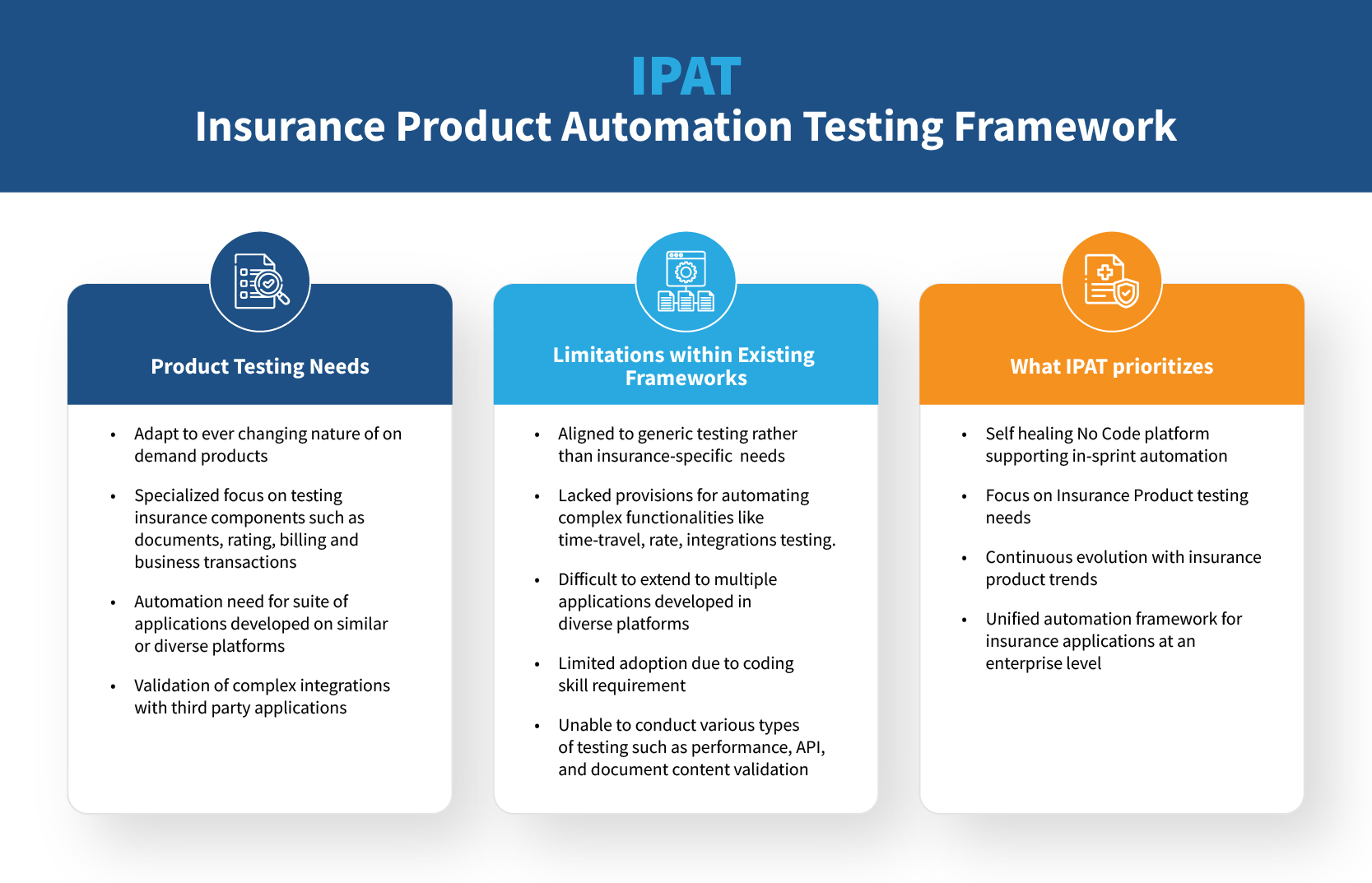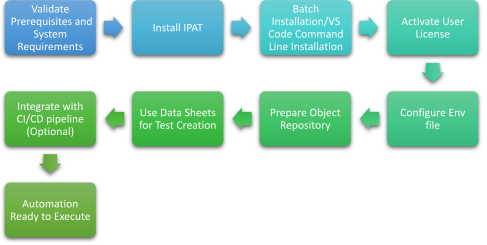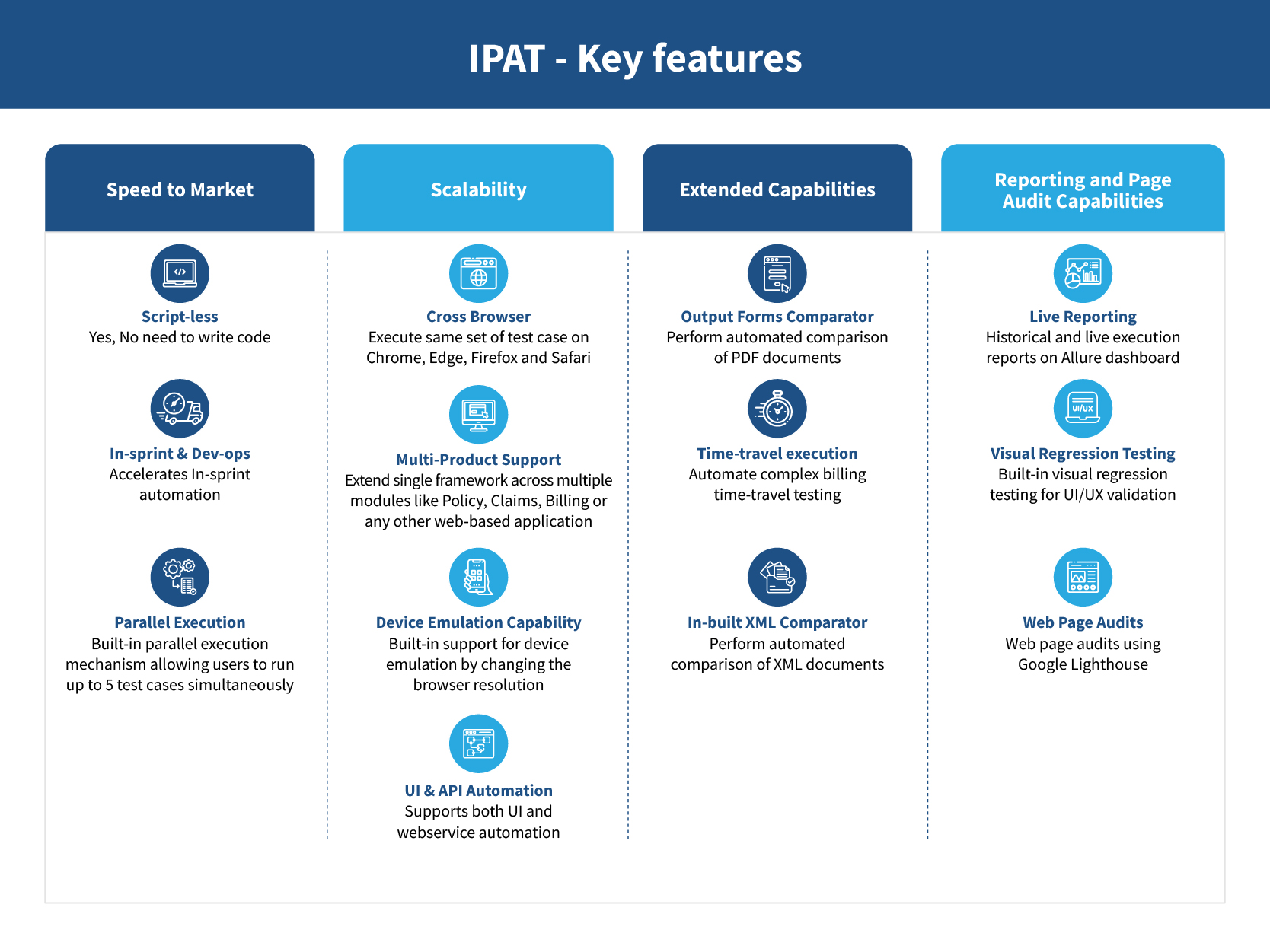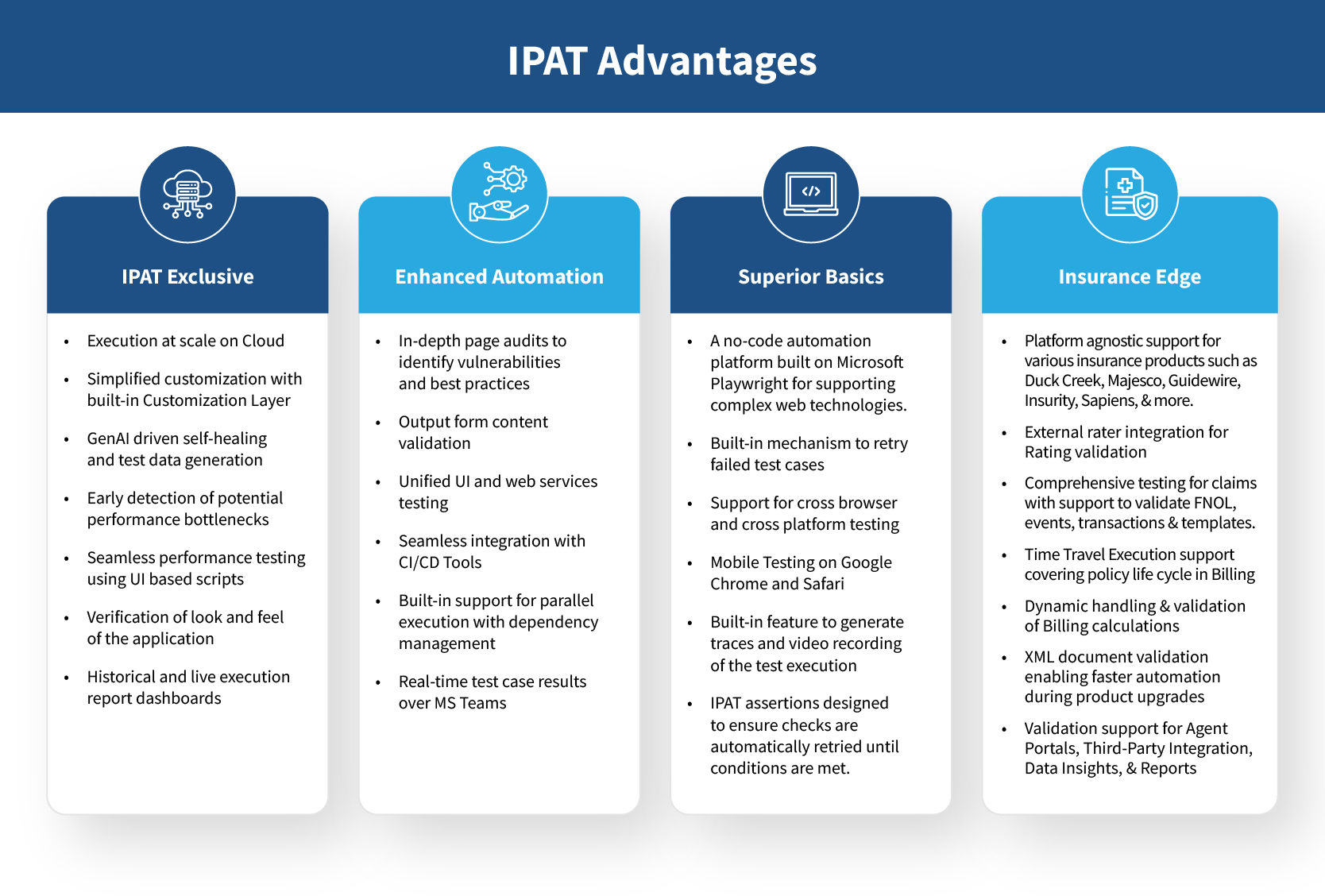Overview
Core transformation in insurance focuses on highly complex product-based developments around multiple product platforms such as Sapiens, Duck Creek, Guidewire, Insurity, Majesco etc. While each product has its own testing automation framework, it is a challenge to adapt to a traditional architecture – as there is a lack of a universal platform to ensure automation testing within a single umbrella.
Towards this, LTIMindtree has developed an in-house script-less automation platform – IPAT – Insurance Product Automation Testing – to overcome these challenges. IPAT is an innovative automation solution that has been conceptualized to overcome major drawbacks in traditional frameworks. Users can automate test cases without needing to write a program or source code, thanks to its script-less design.
Challenges in Traditional Frameworks
-

High Technical Barriers
This can create bottlenecks, as only a limited number of skilled testers can implement automation solutions.
Read More -

Complexity in Maintenance
Maintaining and updating codes in these frameworks was complex, particularly as projects grew in size. This led to technical debt, making future changes and optimization difficult.
Read More -

Longer Automation Development Time
Existing frameworks involve lengthy automation cycles due to complexity and high learning times. This delay can hinder automation in terms of time, quality of coverage, and cost.
Read More
-

Skill-Intensive
Traditional frameworks often require a large team of QA testers with specific technical skills, making them resource-intensive both in terms of time and cost. This led to limited adoption.
Read More -

Lack of a Platform-agnostic Automation Framework
Traditional frameworks were difficult to extend to applications developed in diverse platforms, making automation a lengthy and complex process.
Read More -

Restricted Functionality Validation
Traditional frameworks don’t provide automation testing around complex insurance needs such as time-travel, rate, and integration.
Read More
Implementation Process
The IPAT implementation process is designed for seamless setup and execution. It begins with validating prerequisites and system requirements, ensuring a smooth mechanism through batch installation or VS Code command-line setup. Once installed, user license activation and environment configuration take place, followed by the preparation of the object repository. Test creation is streamlined using data sheets, with optional integration into CI/CD pipelines for enhanced efficiency. With these steps, the automation framework is fully ready for execution, enabling organizations to optimize their testing workflows with speed and precision.
Key Features
IPAT offers a robust automation framework with features like script-less execution, parallel test execution, and seamless CI/CD integration for faster time-to-market. It ensures scalability with cross-browser, multi-product, and device virtualization support. Extended capabilities include automated PDF/XML comparisons, time-travel execution, and UI/API automation, while advanced reporting and visual regression testing enhance accuracy and auditability.
Benefits
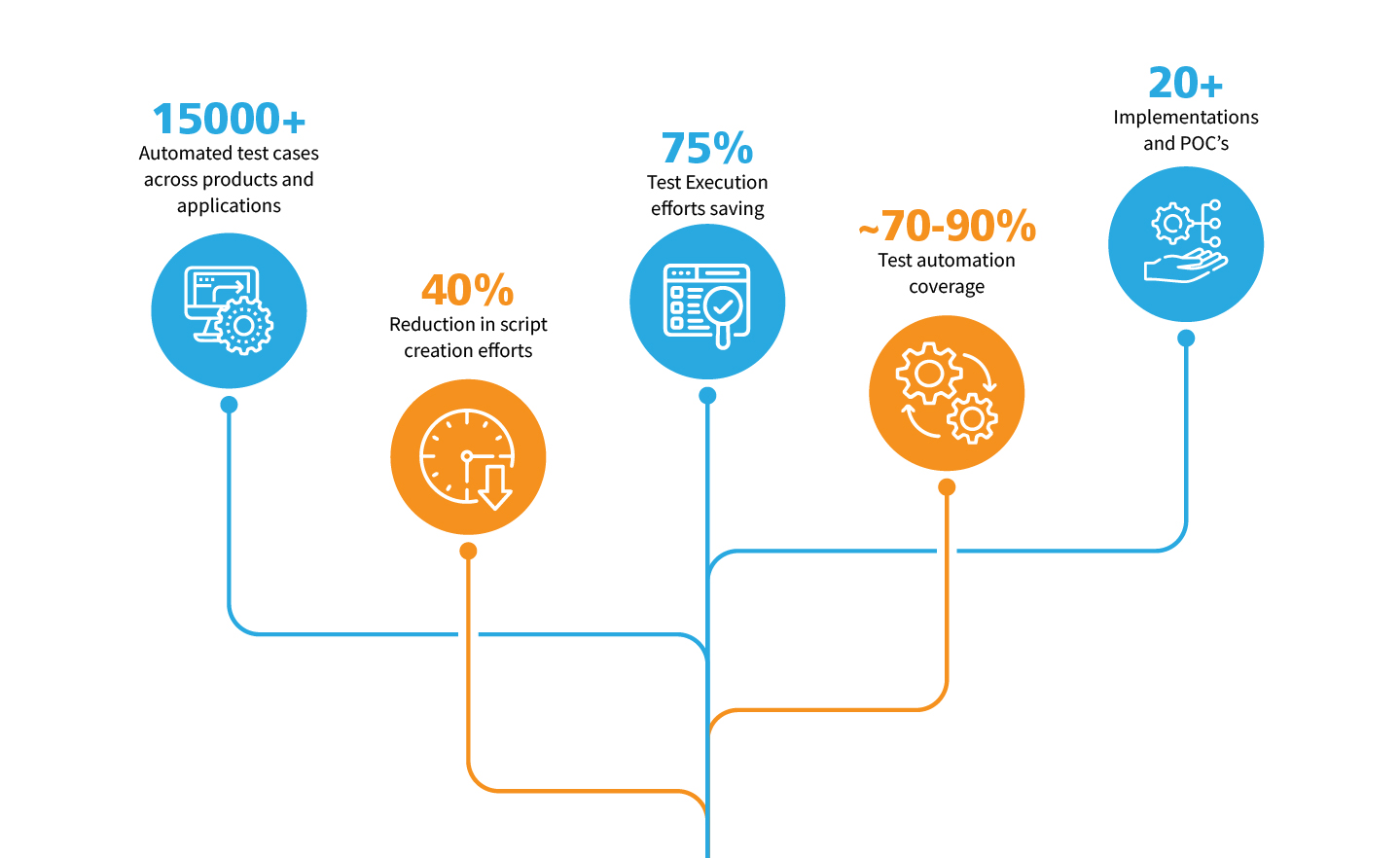
15000+
Automated test cases across products and applications
40%
Reduction in script creation efforts
75%
Test execution efforts saving
~70-90%
Test automation coverage
20+
Implementations and POC's
6000+
Associates



